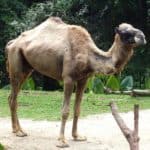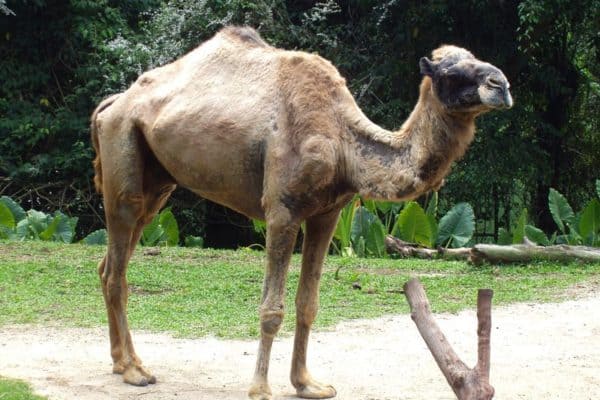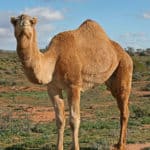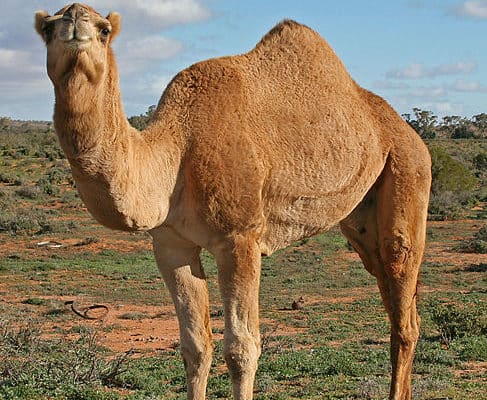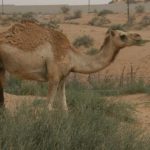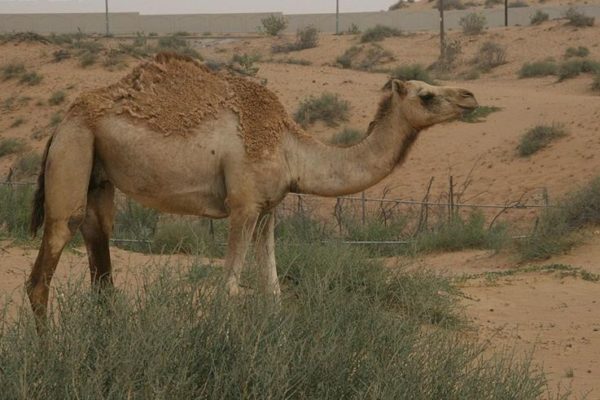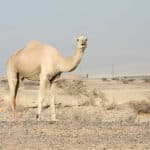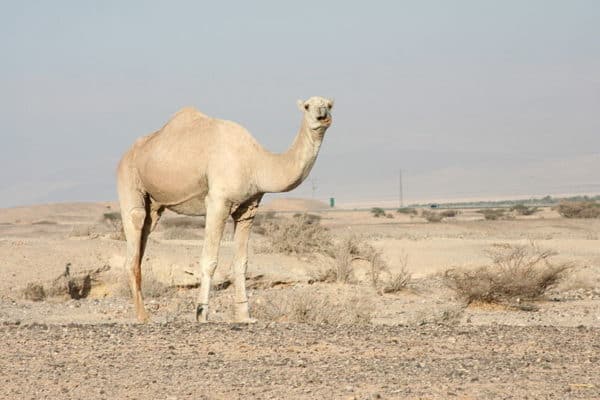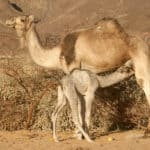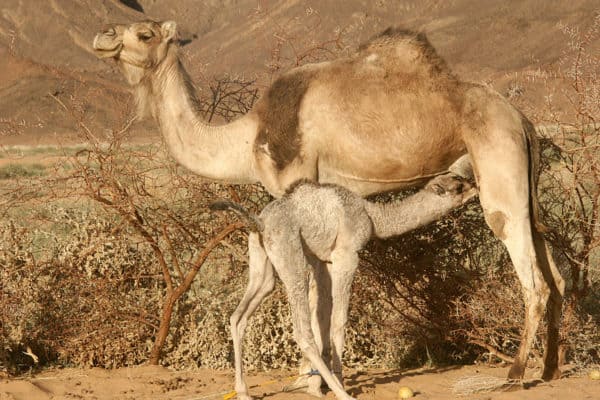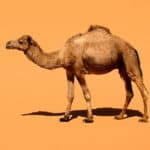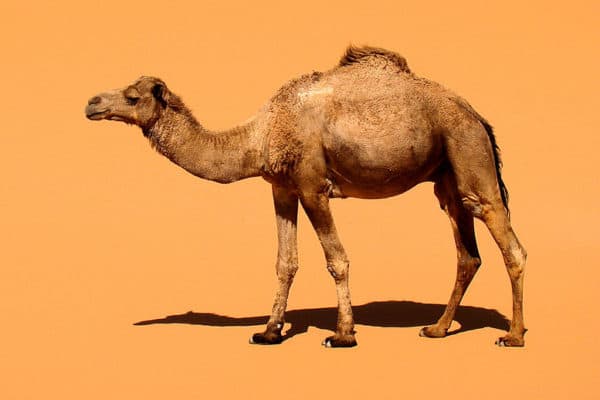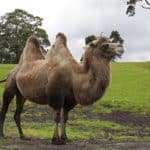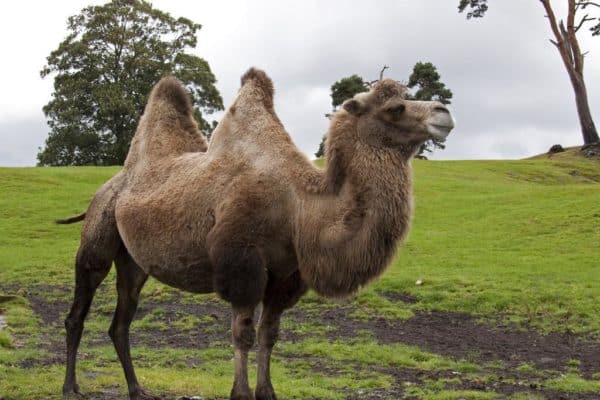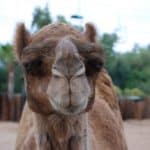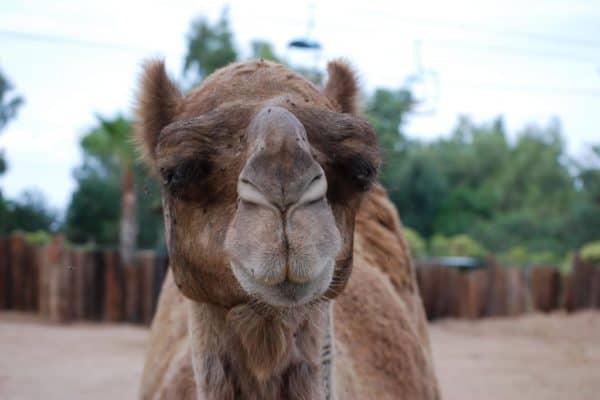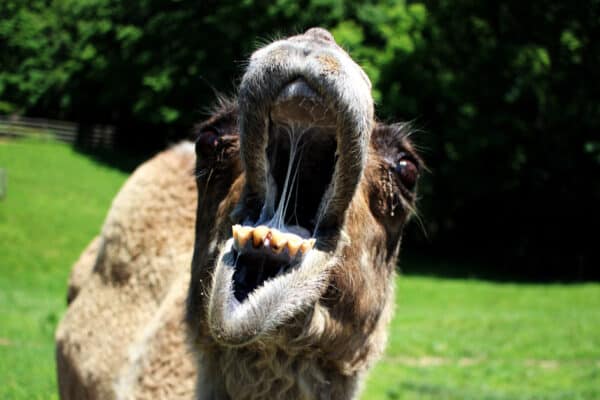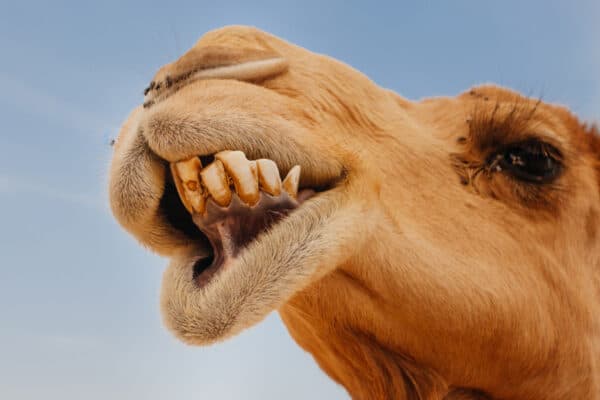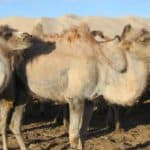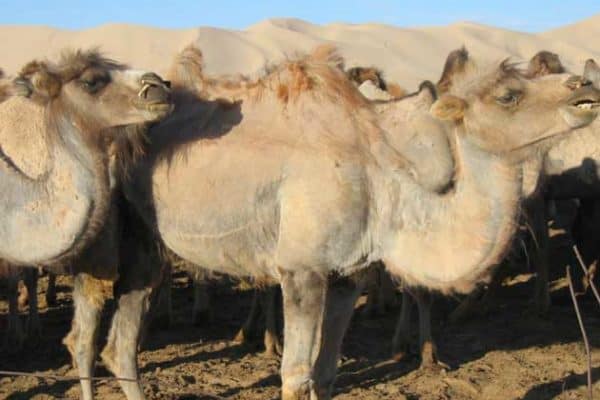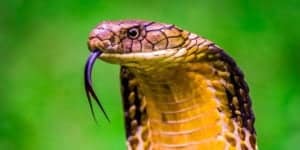Camels are found in many different habitats, from deserts to steppes and even mountains. They are native to the dry desert regions of North Africa, the Middle East, and Central Asia. Camels have adapted to these hot, arid environments by developing thick coats that help them conserve body temperature and water. In addition to their thick fur coat, camels also have special padded feet that protect them from the hot sand while helping them walk great distances without tiring quickly. They can go for long periods of time without food or water because they store fat in their hump, which helps sustain energy levels throughout long treks across the desert.
Camel Adaptations
Humans can have difficulty with sandstorms, but camels have special features to prevent sand from getting into their eyes. Their eyes have a thin, clear inner eyelid that blocks out the sand while still allowing enough light so they can still see. Plus, their eyelashes are extra long, which further helps to keep out the sand. They can also close their nostrils when necessary to stop sand from entering their nose. Additionally, the calluses on their large, wide feet expand when they place their feet on the ground and contract when they lift them up, making it easier to walk in sand or snow.
Camel Stomachs
Camels are one of the few ruminant species of animals that have three chambers in their stomachs, allowing them to digest food more effectively. The process known as rumination involves regurgitating the partially digested food back up from their first chamber so they can chew it again before re-swallowing it into the second chamber. When this process happens, smelly gasses come up with the partially digested food, making for some pretty unpleasant breath!
Additionally, camels also possess a unique adaptation to help conserve water called “water-binding,” which helps them store extra water in their bodies when available. This enables them to endure long periods without drinking any additional water and makes them well-adapted to living in arid climates where other animals would struggle to survive.
Camel Spit
Can camels truly spit? The answer is yes, and it’s quite disagreeable. They’re actually not spitting but rather regurgitating the contents of their stomach, combined with saliva, and projecting it out. This is used to startle, divert, or trouble whatever the camel perceives as a threat. If a camel is about to spit, its cheeks will inflate and swell. Even though camels are large animals, they can still be preyed upon by wolves or other predators when visiting watering holes.
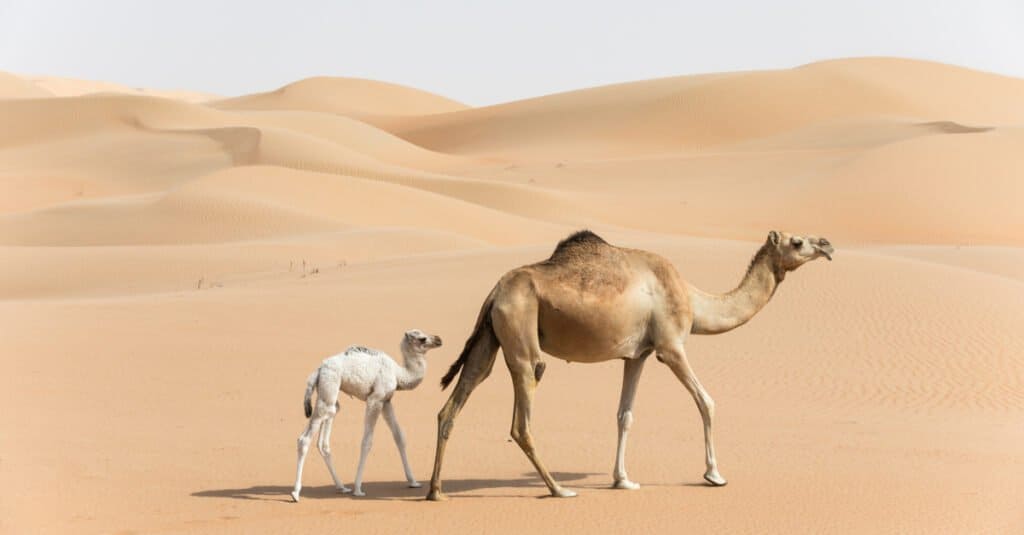
©Kertu/Shutterstock.com
Camel Communication
Camels are very social animals that live in herds with a dominant male. Males that are not accepted into these groups form their own bachelor herds. They have a variety of sounds they make, such as bleats, moans, bellows, groans, and roars. Additionally, mothers and their young use humming to communicate with each other.
When two camels meet, they may greet each other by blowing in the other’s face. Different postures of the tail, ears, neck, and head also convey different meanings in their social interactions. For instance, a curled-up tail is a sign of submission, and ears pointing up is a sign of alertness.
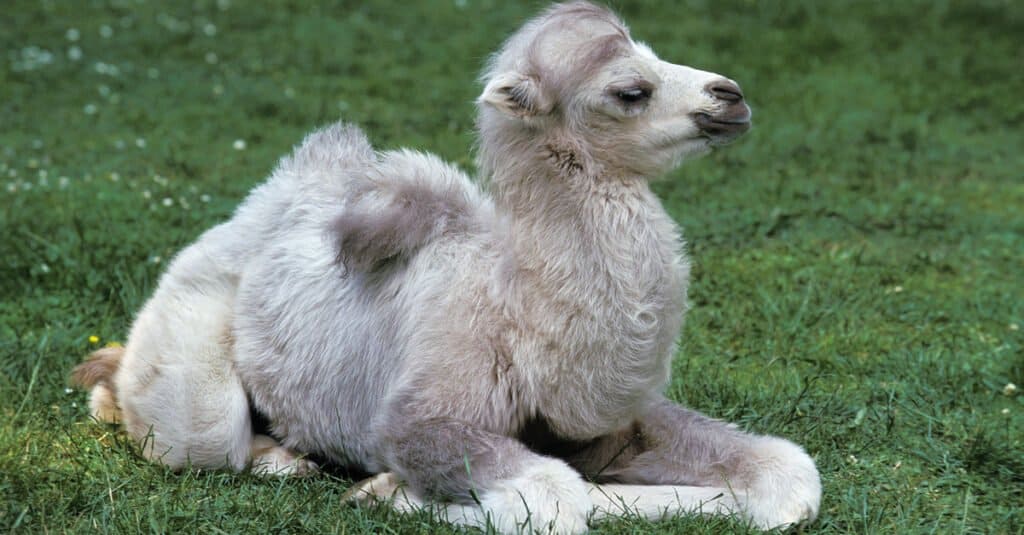
©slowmotiongli/Shutterstock.com
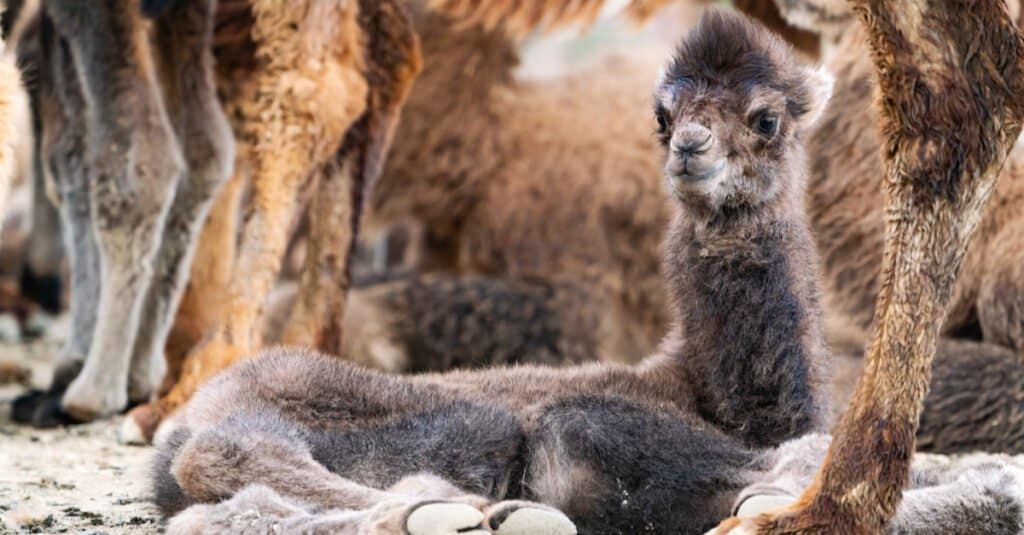
©Vastram/Shutterstock.com
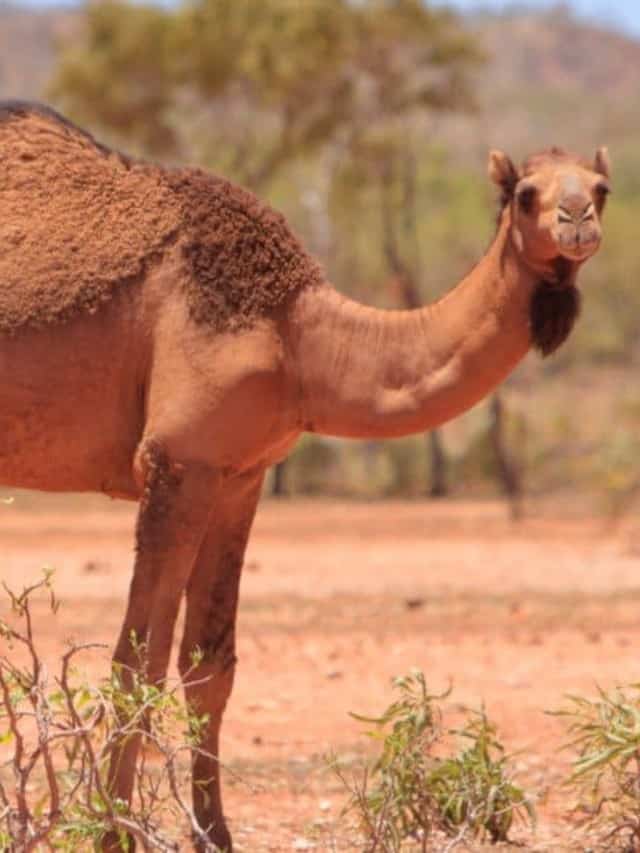
©Chris Ison/Shutterstock.com
Camel Birth
When it’s time for a camel mother to give birth, she will separate herself from the rest of the herd and find a secluded place that is surrounded by plants and vegetation. Within 30 minutes of being born, the newborn camel can already walk alongside its mother. Initially, there will be small bumps on the calf’s back instead of humps, each one having a tuft of curly hair, which will eventually develop into humps.
After about two weeks, mom and her newborn camel return to the group. Nursing for their young can last anywhere between 10 and 18 months, depending on the type of camel and the amount of food available. It takes until they are around seven years old for them to reach their full adult size.
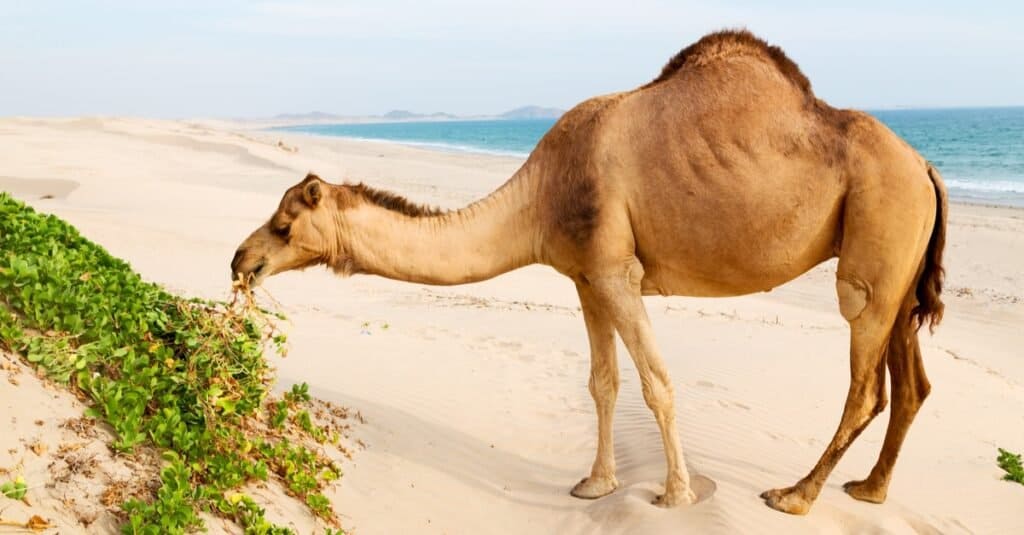
©lkpro/Shutterstock.com
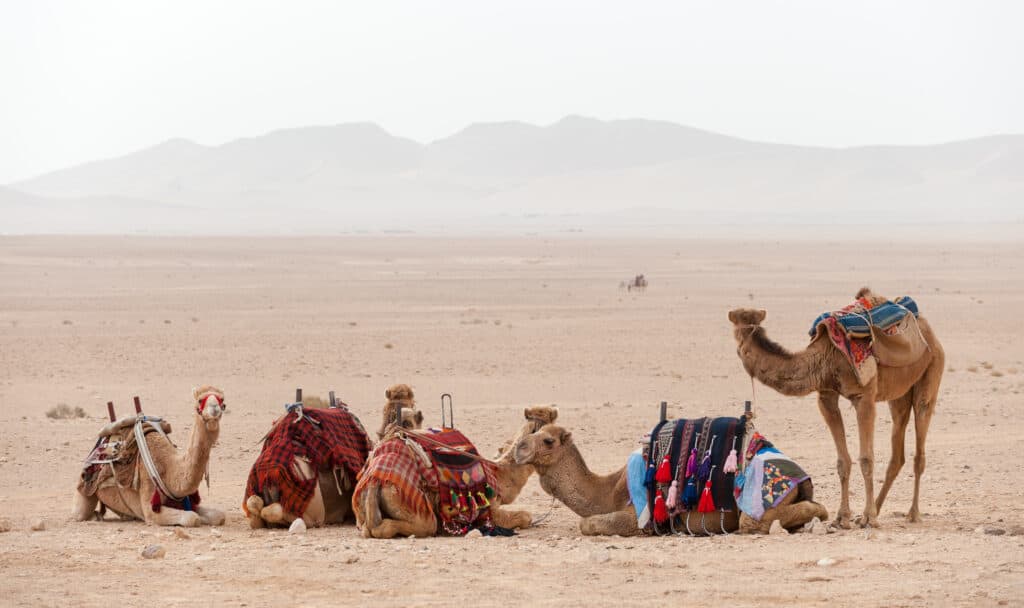
©Christoph Hilger/Shutterstock.com
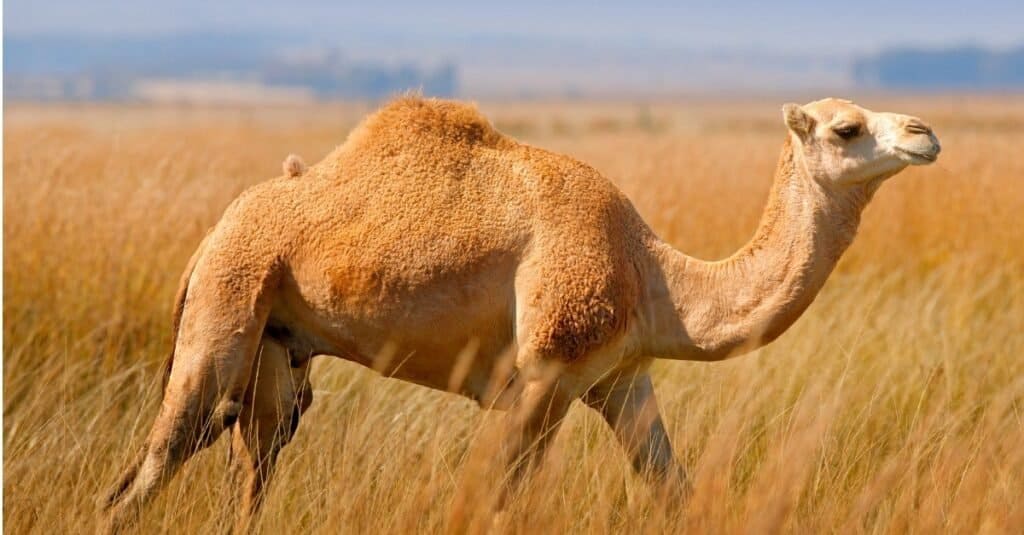
©Ondrej Prosicky/Shutterstock.com

©Mrali/Shutterstock.com
Benefits
Camels are incredibly beneficial to the environment and their local ecosystems. In addition to being a useful resource for humans, camels play an important role in maintaining balance within their native habitats. As grazers, they help keep grasslands healthy by preventing the overgrowth of trees that may otherwise take over these areas. The dung that camels produce is also rich in nutrients which helps replenish soil fertility when spread on agricultural land. Finally, because of their unique ability to survive in extreme conditions like deserts, camels act as keystone species.
Conservation
People have been reliant on camels since antiquity. In the middle of the 1800s, they were imported to the US as an alternative form of transportation and a replacement for beef cattle. If the nomads of the Saharan region persist in their traditional lifestyle, they will still require dromedary camels for wool, milk, and transportation.
The Bactrian camel population is in a dangerous situation, as they are hunted for sport, meat, and competition with domestic camels and livestock for food and water sources. Furthermore, their habitat is being destroyed by illegal mining. There are only around 650 Bactrian camels left in China and 450 in Mongolia. In order to address this problem, the Wild Camel Protection Foundation was created in 1997 and has set up a reserve in China specifically for the Bactrian camel.




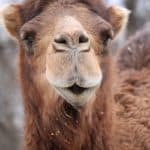
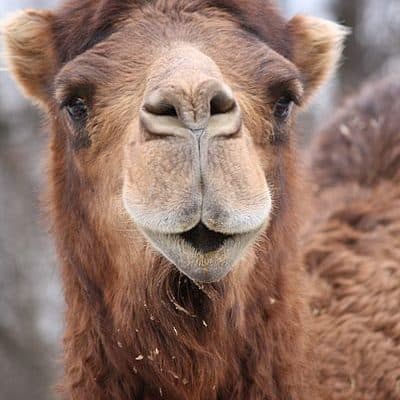
 Ltshears / Creative Commons
Ltshears / Creative Commons